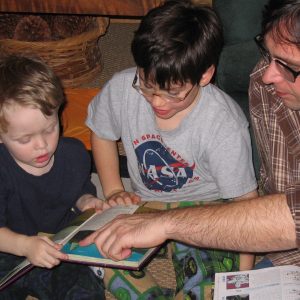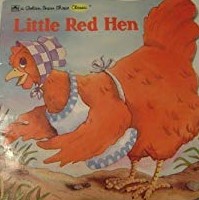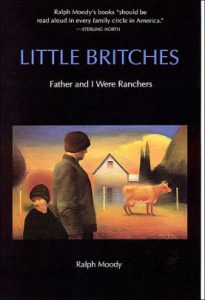 March 4th was the birthday of Dr. Seuss. So of course, that got me thinking about family reading time. I’ve shared the idea that when we read to our children, we create a feeling that kids and teens need and want, that sense of family that feels warm and safe. BUT there are other reasons for reading with our children.
March 4th was the birthday of Dr. Seuss. So of course, that got me thinking about family reading time. I’ve shared the idea that when we read to our children, we create a feeling that kids and teens need and want, that sense of family that feels warm and safe. BUT there are other reasons for reading with our children.
1. Reading as a family is a magnificent way to not only bond and enjoy each other’s company, it’s a way to teach core values without the lecture.
This is especially true when we read classics. And here’s another thing about reading the classics that I find fascinating – they’re worth reading more than once because we learn new things every time. They have some depth to them.
There are classics in each field from history, math, science, literature, the digital age, and even surfing, cycling, dancing, gardening, etc. There are classics for every age group.
 One classic that my children loved was The Little Red Hen. Yup, it’s a classic. I know that we think of classics as dry and boring, but they aren’t. Here’s a link to a wonderful list of classic books I put together that kids and families will love.
One classic that my children loved was The Little Red Hen. Yup, it’s a classic. I know that we think of classics as dry and boring, but they aren’t. Here’s a link to a wonderful list of classic books I put together that kids and families will love.
Now back to the Little Red Hen. A family I know was reading The Little Red Hen together one morning. Then they all went grocery shopping. When they arrived home the car was full of groceries which needed to be carried into the house. Now, normally everyone would scatter off to do the next important thing but not on this day. The classic they had read just that morning had sunk into the hearts of the children. All the children began carrying in groceries without being asked. AMAZING, right!
A mother I attended a class with told this story. She and her boys were reading Little Britches. Set in the early 1900s this story is told from the point of view of a young boy who moves from New Hampshire to Colorado with his family because his father is ill and cannot work the coal mines any longer. Through the eyes of this young boy, we experience the perils and pleasures of ranching life from picnics to hay season, tornadoes to cattle roundups. Some of the main story themes are hard work, honesty, character, perseverance, and the simple life.
While they were reading this book the younger of the boys shared some information about his brother  which he knew he shouldn’t share, and which caused his older brother some embarrassment. Later in a private moment, the younger boy said to his mom, “I guess I have taken some of the boards off of my house”, in reference to a comment by Ralph, the lead character in the book. Ralph was referring to doing something that was destroying his house of character.
which he knew he shouldn’t share, and which caused his older brother some embarrassment. Later in a private moment, the younger boy said to his mom, “I guess I have taken some of the boards off of my house”, in reference to a comment by Ralph, the lead character in the book. Ralph was referring to doing something that was destroying his house of character.
Reading regularly as a family, from the classics, can be some of the most enduring and meaningful times we have with our kids. One of my daughters who is in her forty’s mentioned how wonderful it was, the way I read to them all the time. Amazing! I really didn’t read to them all the time. I read to them, but it wasn’t consistent. Even so, it had a powerful effect on her.
2. Another reason to read as a family is the shared memories that are forged.
I always anticipated being a grandparent and one of the things that I thought about was reading to my grandchildren. So, I made a plan. The whole experiment turned out pretty well. I had to explain to one family of grandkids, a couple of times, that this was a quiet time, but all in all, it was fun. We read a half dozen one-page stories from a big book that I had. I noticed that they went off to sleep with less noise and quarreling than usual.
When they came the next time, I had picked a couple of books that I thought were more interesting and livelier. Guess what? My 10-year-old granddaughter insisted that we read from the book we used our first time. That book held the memory of that first reading experience. They requested it every time. So, we always had to read at least one story from its pages.
3. Another perk that comes from reading as a family is the terrific conversations you can have together.
When Maggie was nine her school had an assembly and kicked off a month-long reading contest. Everyone wanted to win the contest. Maggie’s class had won the year before and wanted to win again. I was Maggie’s class aid at the time (she has cerebral palsy) and so I was able to observe how it went.
On one day they had five books read to them by participating adults. Some of the readers were very interesting and some read in a monotone and were soooooo boring. Some readers obviously liked what they were reading, and some felt uncomfortable. Some were good readers and some adults stumbled while reading all those rhymey words. The children enjoyed the books even if the readers weren’t comfortable or if they were a bit boring.
But here is what I noticed the most. There was virtually no interaction between the reader and the children, about the content of the books. A couple of the readers said something like this: isn’t that funny, wouldn’t you be scared, or what do you think of that. But these were rhetorical questions because time wasn’t given to the children to answer. If a child did try to answer they were asked to not interrupt so that the reading could go on. This is how most of us read to children. We are all about getting through the material. It’s so adult of us!
But there is a better way! And this better way is what creates that sense of family that can happen during family reading time. Talk about what you are reading. That’s why reading the Little Red Hen was so powerful for one family and why reading Little Britches was powerful for another. They talked about it.
If you need a tutorial on how it looks to have an enjoyable reading conversation with your family check out this article called Creating That Family Feeling.
Take the time on a regular basis to gather your kids around you and read to them. You’ll be glad you did and so will your whole family!







